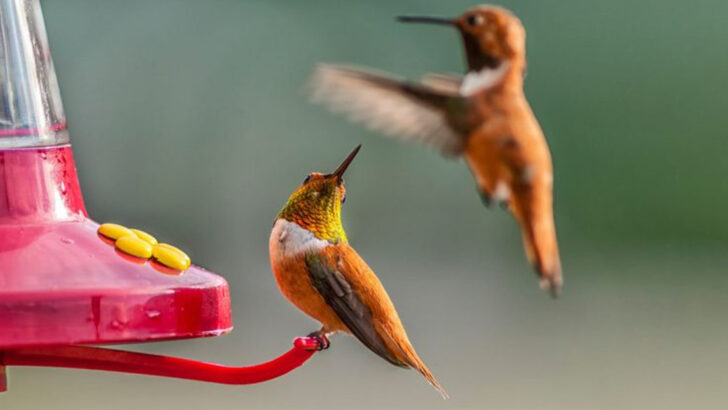Hang your hummingbird feeder in the wrong spot—and you could be inviting danger, not dinner.
These tiny birds may look delicate, but they’re fierce little fliers with high-speed lives. One bad placement, and you risk everything from deadly window strikes to sneaky predators lying in wait.
Your yard might seem like a paradise, but not every perch is safe.
Too sunny? They’ll overheat. Too close to cats? Say goodbye to your visitors. And don’t even think about hanging it near your grill. Yes, really.
To protect these aerial acrobats, you need to know where not to hang that feeder.
Let’s make your garden a haven—not a hazard.
Near Windows

Placing a feeder close to windows might seem convenient, but it can be perilous for our feathered friends. Hummingbirds can easily become confused by reflections, mistaking them for open skies. This misunderstanding often leads to fatal collisions.
Even if the window is clear, the transparent glass can be invisible to a hummingbird in flight. Consider hanging the feeder at least 15 feet away from windows to prevent accidents. Adding decals or other visual markers can also help make the glass more visible.
Safety should always be a priority when choosing a placement for your feeder.
In Direct Sunlight
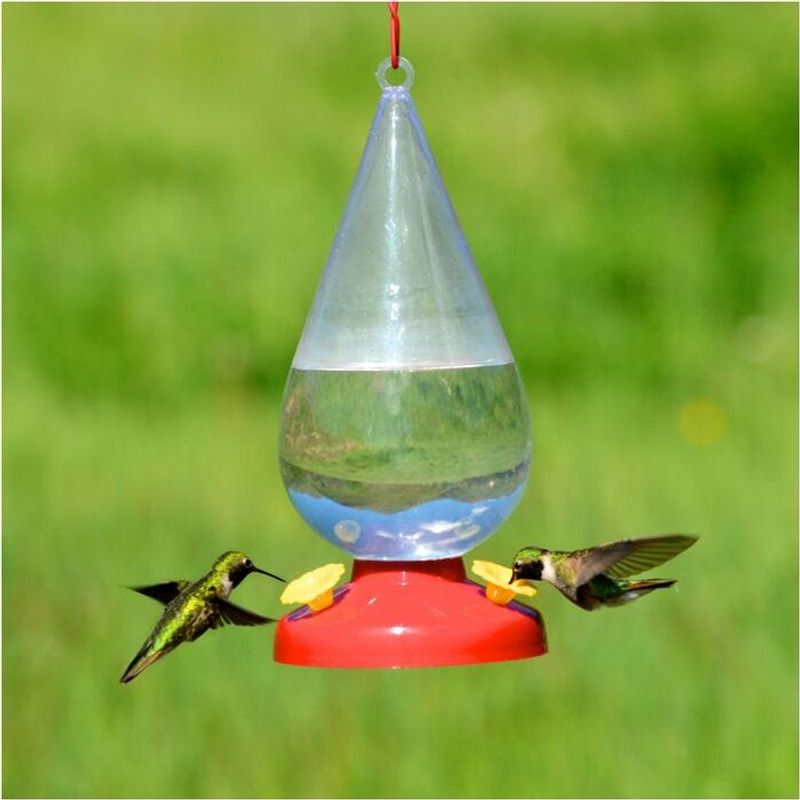
While sunlight might seem ideal, direct exposure can quickly spoil the nectar inside the feeder. High temperatures cause fermentation, turning the sweet treat into a harmful concoction for hummingbirds.
Instead, opt for a shady spot where the nectar remains fresh and inviting. This reduces the risk of your feeder becoming a health hazard.
You can hang it under a tree or use a pergola for some protective shade. This simple adjustment can make a world of difference.
Near Predators
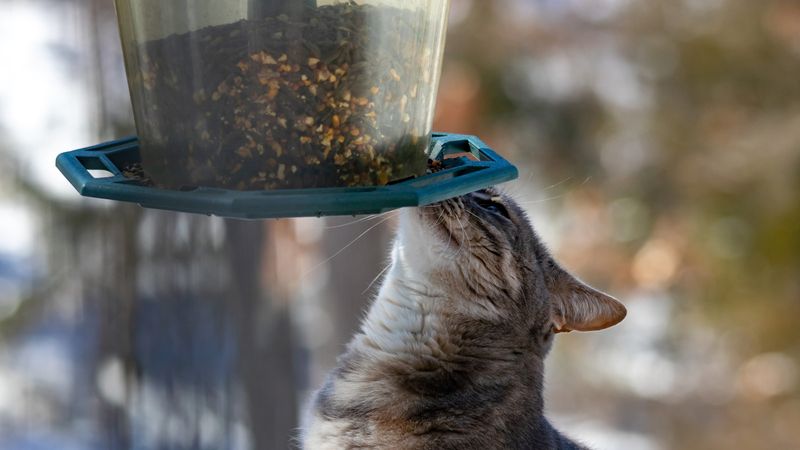
Hummingbirds are swift, but predators like cats can pose a significant threat. Placing a feeder near dense bushes or areas where cats are known to roam is risky.
To minimize danger, choose open areas where hummingbirds have plenty of room to escape. Monitor for any lurking threats and make adjustments if predators become a problem.
Creating a safe environment is vital to ensure these tiny birds can feed without fear. A peaceful garden is a joyful one.
Close to Beehives
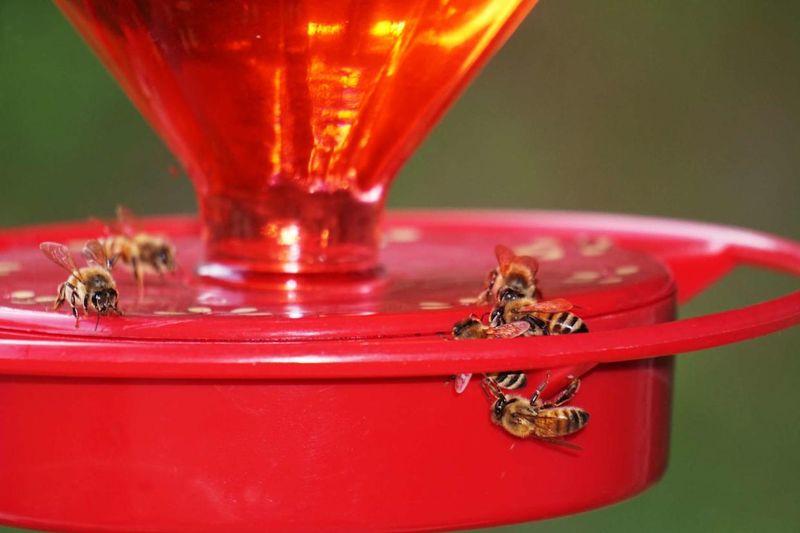
Bees are essential pollinators but can be problematic around hummingbird feeders. When nectar is readily available, bees might swarm the feeder, deterring hummingbirds.
To prevent this, avoid hanging feeders near beehives or areas with heavy bee activity. Instead, offer shaded locations away from their usual routes.
Using bee guards on feeders can further reduce unwanted visitors. This ensures your feeder remains a hummingbird haven rather than a bee buffet.
Under Gutters or Overhangs
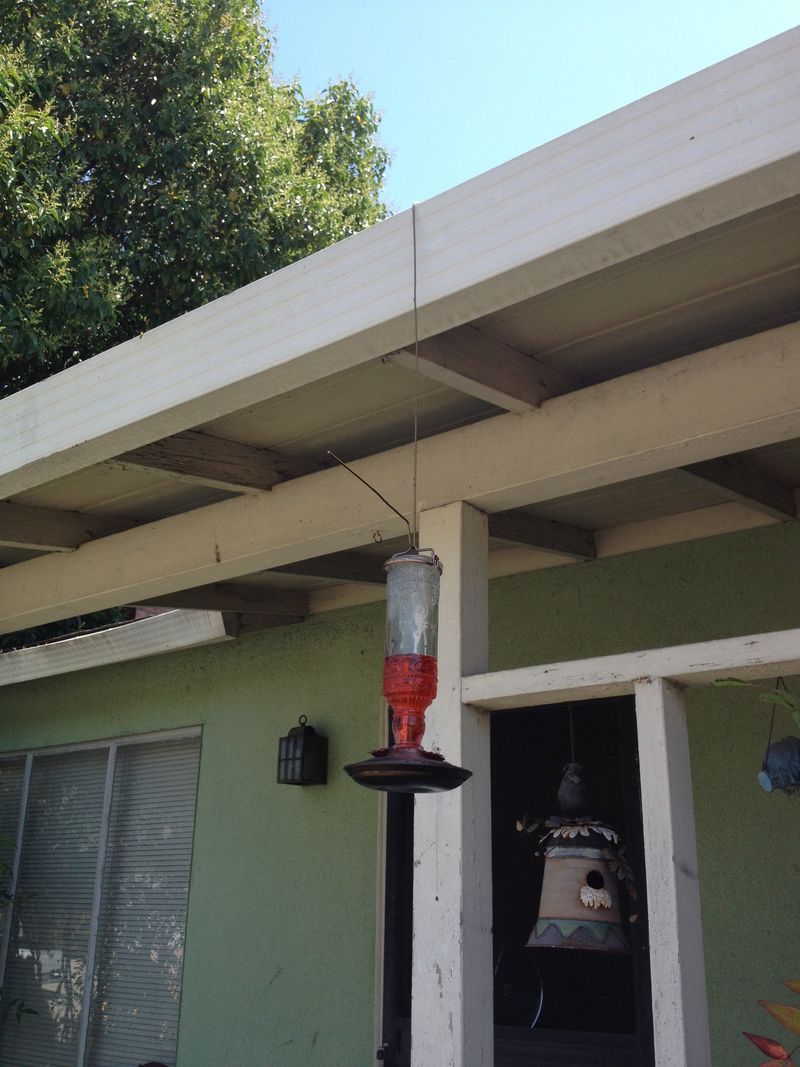
Water from gutters can overflow, making feeders beneath them less than ideal. Constant drips can dilute the nectar and create a mess, leading to mold growth.
Moist conditions are not only messy but potentially harmful, attracting unwanted pests. Evaluate your outdoor space and avoid hanging feeders in areas prone to drips.
Choosing a dry, stable spot will keep your feeder clean and safe. Protecting nectar quality is crucial for keeping hummingbirds healthy.
Near Bird Feeders for Larger Birds

Feeding stations for larger birds can intimidate hummingbirds. The presence of bigger birds often leads to aggressive interactions, leaving hummingbirds too scared to feed.
To provide a peaceful feeding ground, consider separating feeders by at least 10 feet. This distance allows hummingbirds to enjoy their meal without feeling threatened.
Creating a harmonious environment will attract more feathered visitors and keep the peace in your garden.
Next to Noisy Environments

Hummingbirds prefer tranquil settings, making noisy areas unsuitable. Placing a feeder near traffic, construction, or loud machinery can deter these sensitive creatures.
Seek out quieter corners of your garden where hummingbirds can sip in peace. A serene setting enhances their experience and increases visits.
Providing a calm oasis ensures hummingbirds associate your garden with rest and refreshment. It’s a simple way to support their needs.
Inside Enclosed Spaces
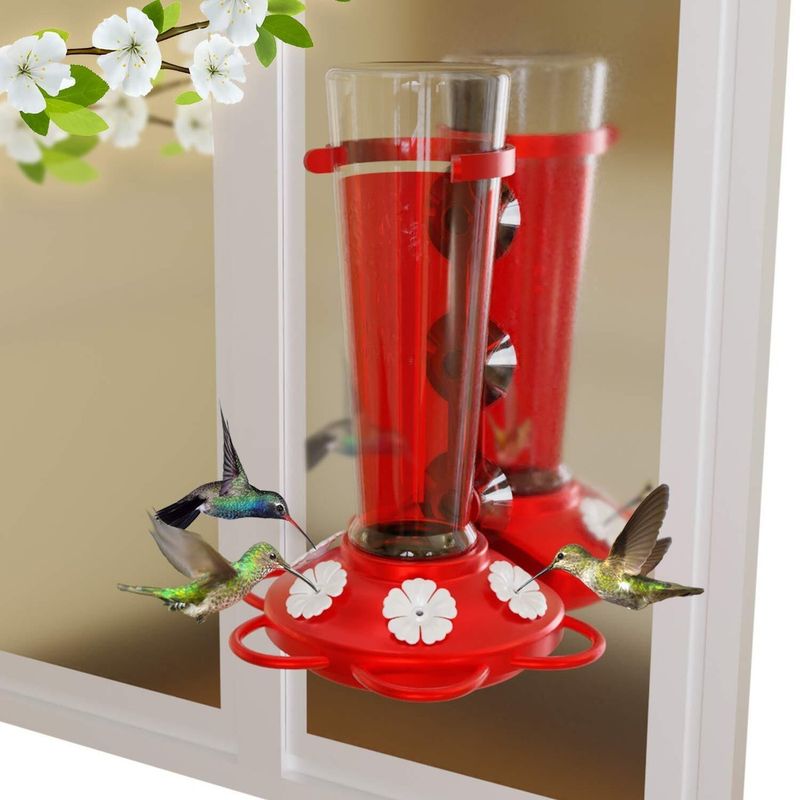
Enclosed spaces pose a trap risk for hummingbirds. They may struggle to find their way out, leading to stress and exhaustion.
Avoid placing feeders in areas with limited exits, such as screened porches or garages. Open-air locations are preferable where birds can easily navigate.
Ensuring easy access and egress is vital for their safety. A well-positioned feeder becomes a welcoming stop rather than a perplexing puzzle.
Next to Streetlights or Artificial Lights
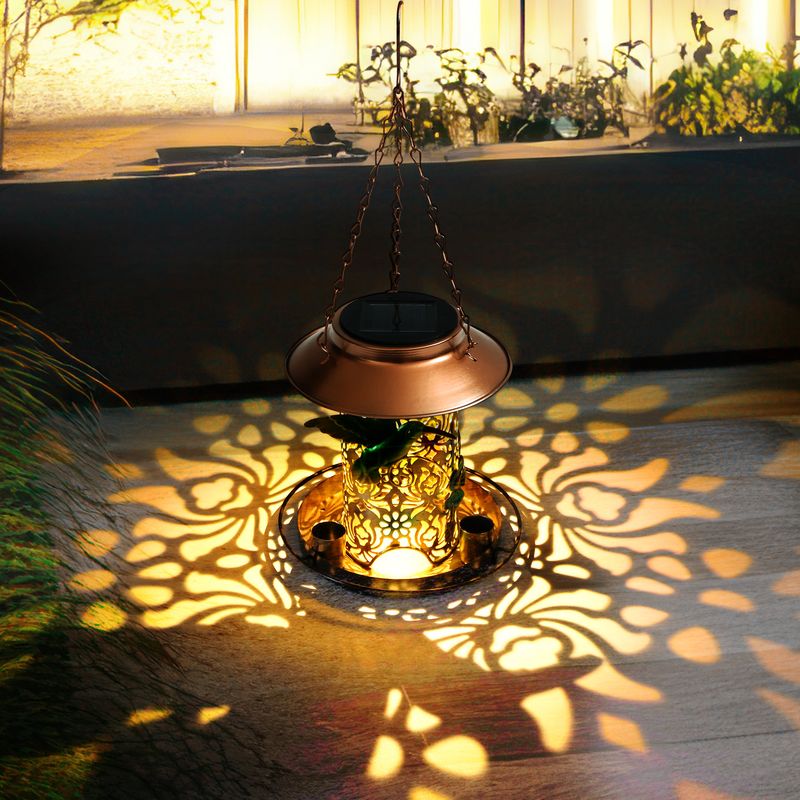
Artificial lights can confuse nocturnal instincts. Though hummingbirds aren’t night-active, nearby lights may attract unwanted pests or disrupt natural rhythms.
Opt for dimly lit or naturally shaded areas away from artificial light sources. This minimizes light pollution and creates a more natural environment.
It’s not just about visibility; it’s about preserving harmony. Thoughtful placement makes a difference.
In Windy Locations
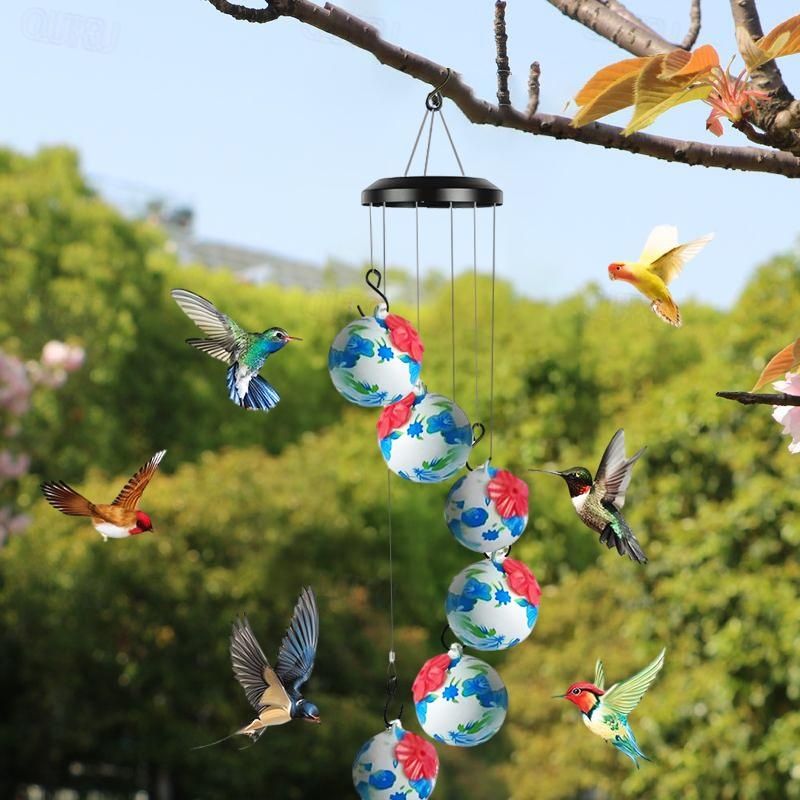
Windy spots are troublesome for feeders. Constant swaying leads to spills, wasting nectar and deterring hummingbirds.
Secure feeders in sheltered areas where winds are less likely to disrupt feeding. This keeps the nectar stable and accessible.
Stability is key to attracting consistent visitors. A well-secured feeder offers a reliable dining experience for our feathered friends.
Near Decks with Heavy Foot Traffic
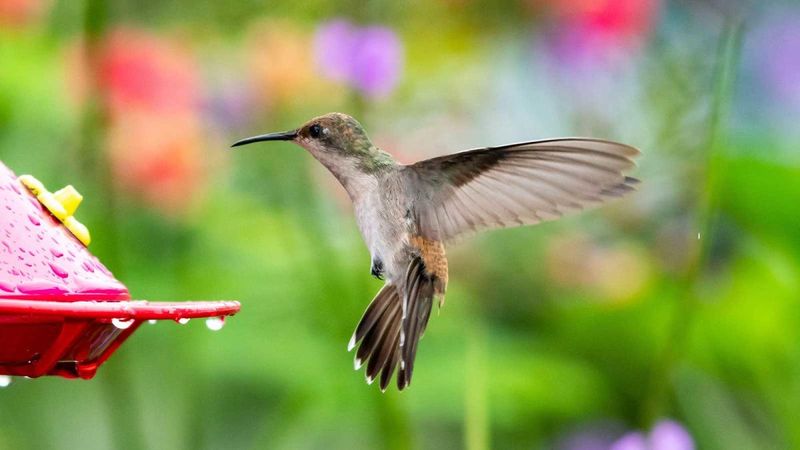
Heavy foot traffic can scare hummingbirds away. A feeder close to a busy deck or patio might not see much use.
Select quieter spots in your yard where birds can feed without interruption. This encourages more frequent visits and better viewing opportunities.
Choosing tranquility over traffic ensures your garden remains a favorite among hummingbirds. It’s about balancing access with comfort.
Under Dense Canopies
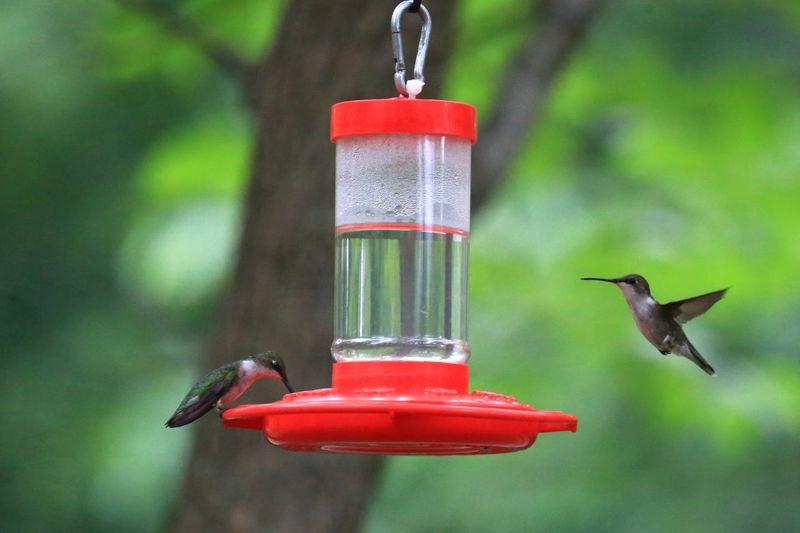
Dense canopies obscure feeders. While shade is beneficial, too much coverage keeps feeders hidden from view.
Position feeders where they are visible yet protected from direct sun. This balance attracts more birds while keeping them comfortable.
Location matters for visibility and safety. A well-placed feeder is a beacon for hungry hummingbirds.
In Unstable or Poorly Mounted Positions
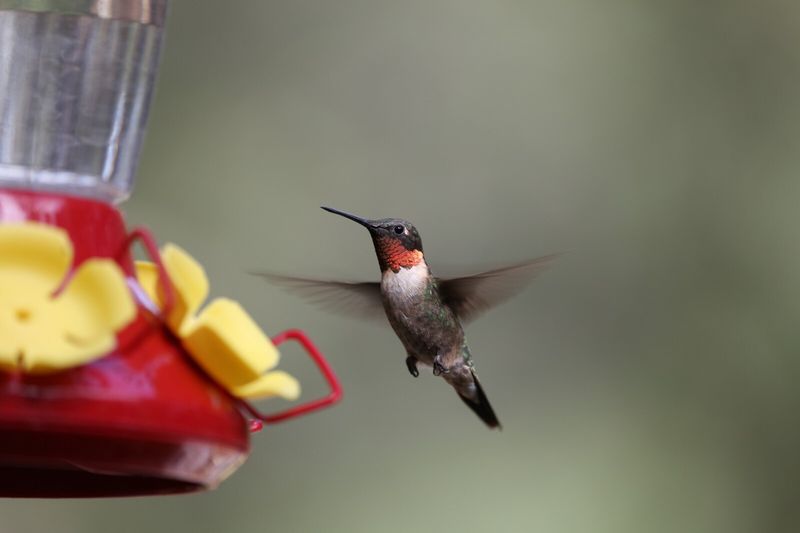
Stability is crucial. Unstable feeders can fall, spilling nectar and creating hazards.
Ensure all mounts are secure, and feeder hangs properly. Regular checks prevent accidents that could deter birds.
A stable feeder is a trusted source for nourishment. Proper mounting fosters a thriving hummingbird habitat.

